You may have come across terms thrown about in the crypto space, such as “head and shoulders,” “rising wedges,” and “cup and handle.” These are used by traders when analyzing crypto chart patterns. In this guide, we will explain how to read bitcoin charts and highlight popular crypto chart patterns you should know.
What is Chart Analysis?
To determine whether to take a long or short position when trading bitcoin, you can use charts that provide you with timely insights. Technical analysis can help traders to assess price trends and crypto chart patterns to spot trading opportunities.
Technical analysis involves the analysis of past trading activity and price fluctuations of an asset, which can help to predict future price movements to some degree. Technical analysis uses patterns in price information to identify trends and make predictions.
Bitcoin chart analysis is important in the sense that traders can interpret charts to better understand herd mentality. Bullish and bearish trends are part of a general market symphony of rising and falling prices.
In other words, a steady increase in the price of a digital asset is often an indicator of optimism and excitement in the market. The reverse is also true. A crypto asset with a downward trajectory reflects a gloomy market outlook and puts pressure on sellers.
Both bullish and bearish trends can only be reversed if there is a change in attitude for market participants.
Having said that, bitcoin chart analysis relies on mathematical and statistical modeling to understand price and market behavior. Three main principles apply to bitcoin chart principles:
- History is repetitive
- Price momentum is a trend
- The market discounts everything
Applying these tenets, you can easily draw on several influences, including behavioral and traditional economic principles, to predict market movements.
Remember, technical analysis not only focuses on price movements but gives clues about market sentiment. To use the crypto chart analysis methodology, you have to take into consideration factors like historical crypto demand trends, global regulatory trends, and recent trends in the crypto community.
How to Read Crypto Charts
Reading crypto charts is essential to anyone looking to trade digital assets. If you want to assess price trends from a crypto chart, you will have to learn about the different types of charts. There are three common types of charts used by traders; line charts, bar charts, and candlestick charts.
Line Chart
A line chart or a graph chart is a visual representation of a digital asset’s price history using a single, continuous line. A line chart displays data a series of data points connected by straight line segments. A line chart is the most basic type of crypto chart and typically only plots the closing prices.
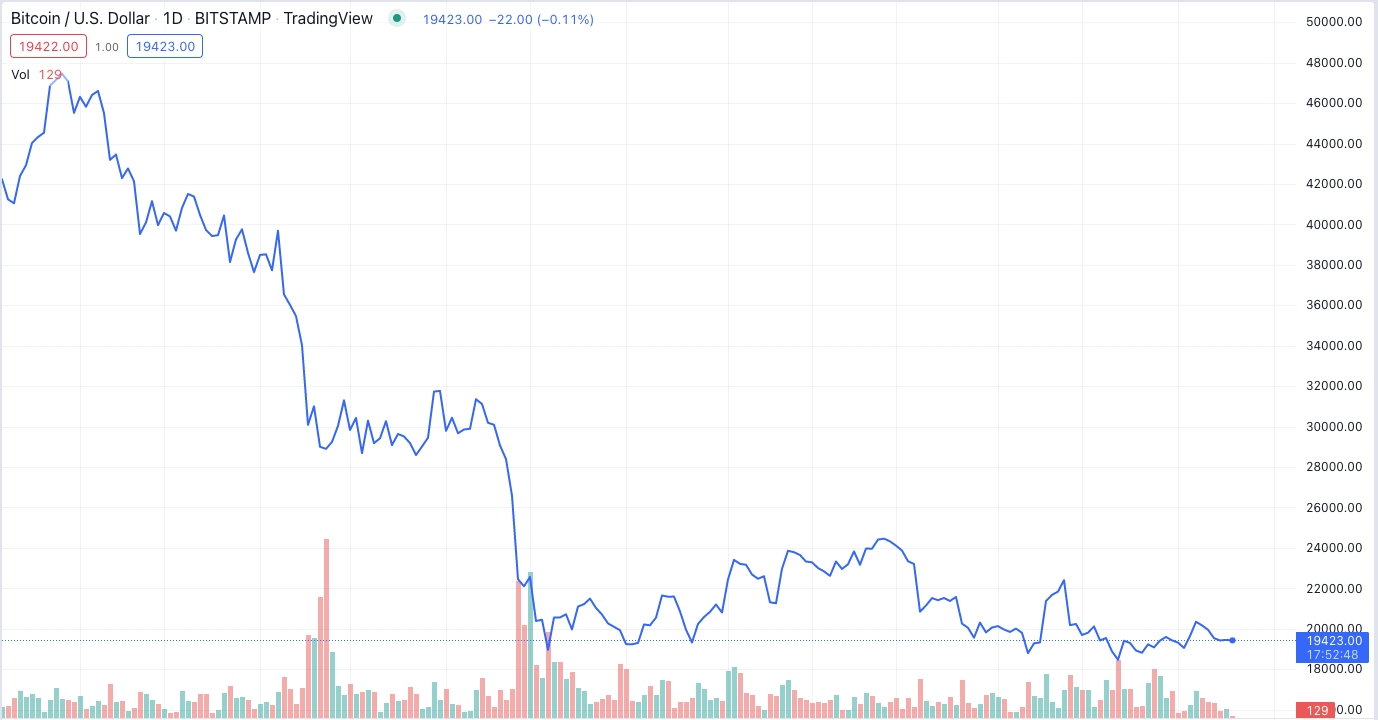
In the chart above, the horizontal axis is the time scale, and the vertical axis denotes the price. You can work out the crypto price by connecting a data point to the horizontal axis in a straight line and the date by connecting a data point to the vertical axis. Each point in the graph tracks the daily closing price.
Bar Chart
A bar chart consists of several price bars, with each bar representing the price performance over a specific period. A bar chart visually depicts the price fluctuations of an asset during a specified time frame.
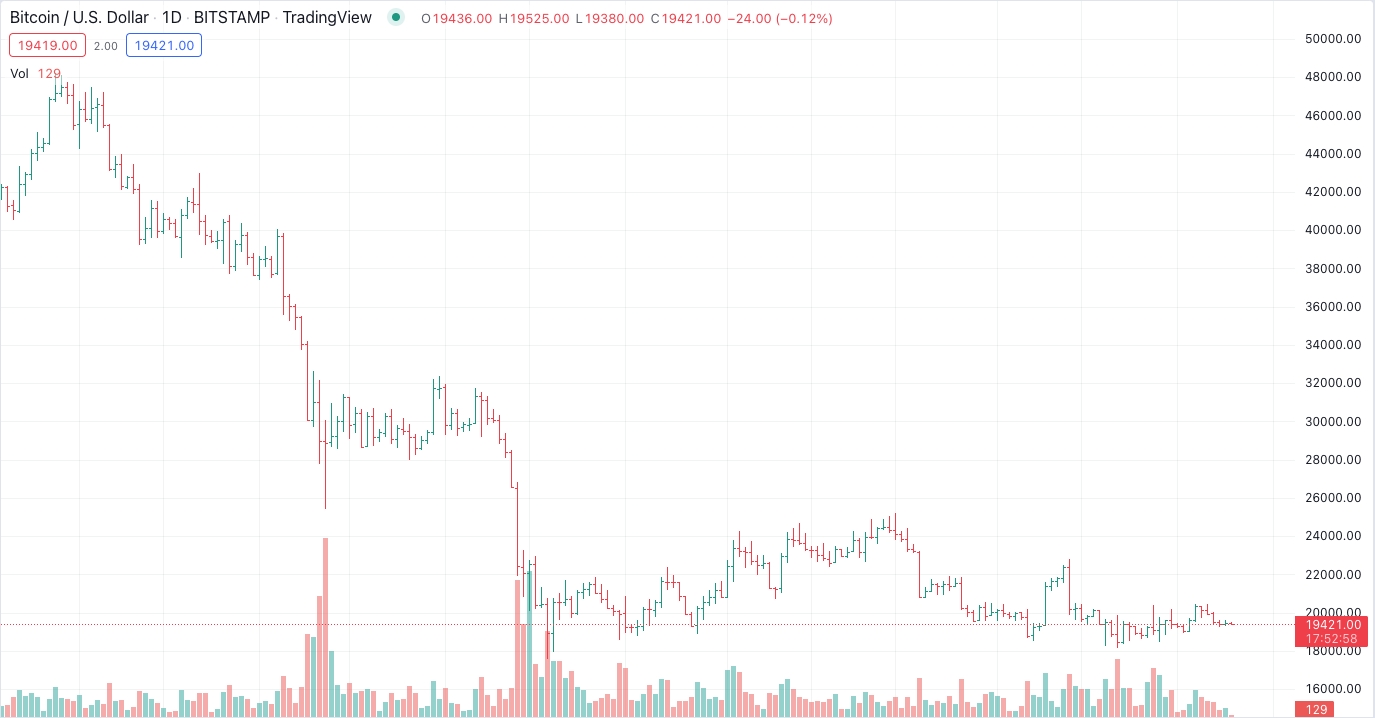
In the chart above, the vertical line on the price bar depicts the high and low prices for that period. The horizontal lines on either side represent the open and closing prices.
Candlestick Charts
The most popular crypto chart out there is a candlestick chart. A candlestick chart uses candles to depict crypto price uptrend/downtrend within a specified period.
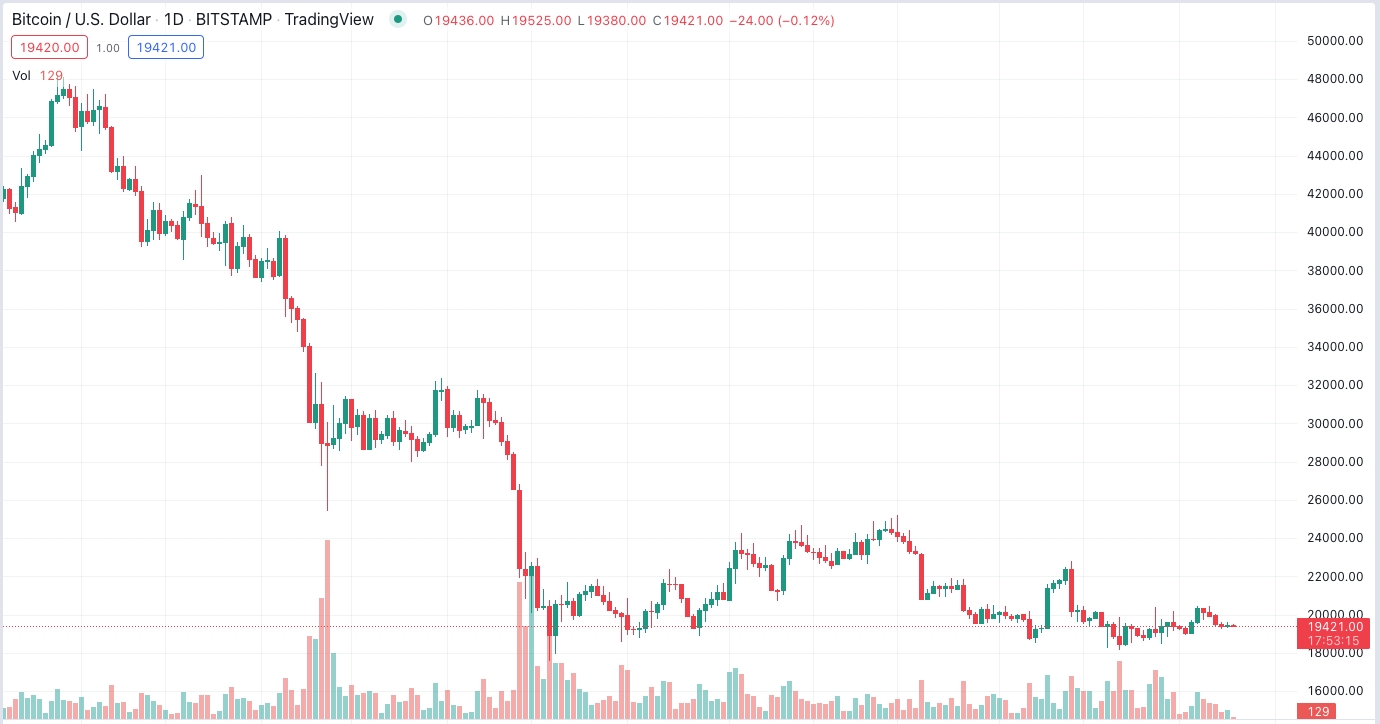
A candlestick consists of a body and a wick. The body of the candle represents the opening and closing prices, whereas the wick attached to the summit represents the highest price of the crypto within that time frame. The wick at the bottom represents the lowest price of the crypto asset within the selected time frame.
The colors of the candle have significance. The red candle shows the price of an asset has fallen, while the green candle shows the price of an asset has risen.
Popular Crypto Chart Patterns You Should Know About
Crypto charts form different patterns that traders can use to take a position based on their significance. A chart pattern is a shape within a price chart that may indicate the next price movements based on historical trends. Crypto chart patterns are the basis of technical analysis and can help traders to predict price trends.
Crypto chart patterns can be classified into the following groups:
- Continuation patterns provide continuation signals of the current trend.
- Bilateral patterns indicate high volatility and uncertainty in the market.
- Reversal patterns give reversal signals.
Here are five popular crypto chart trading patterns that will can you trade.
Head and Shoulders

This is an advanced chart pattern that’s bullish and bearish, with a large peak in the middle and smaller peaks on both sides. It is characterized by a temporary high and low, followed by a bigger correction higher or lower, and follows the third move higher or lower that’s equal to the first move.
Triple and Double top and Bottom
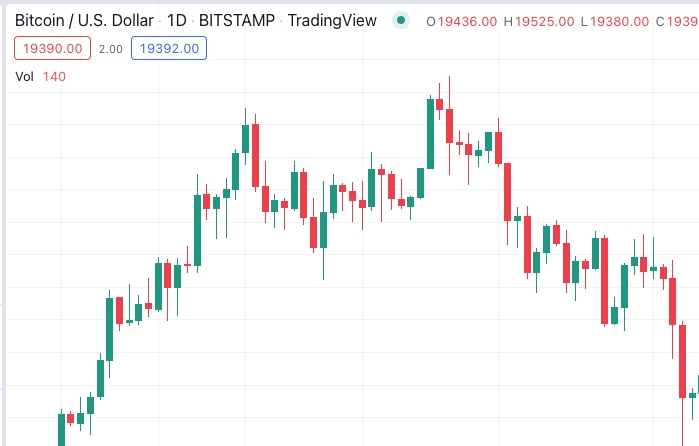
A double (or triple) top and bottom chart pattern happens when markets bounce off the same resistance or support level twice (or thrice) in succession. A bullish indicator is regarded as a double bottom, while a bearish trading signal is known as a double top. Both triple and double patterns usually indicate market sentiment has changed and prices are about to change direction.
Ascending and Descending Triangle

Ascending and descending triangles are created with a horizontal trend line linking highs and lows and a second trend line connecting rising highs and declining lows. The resulting triangle will reach a decision point where the price will erupt or crash from the horizontal line in the direction of the sloped line.
Cup and Handle
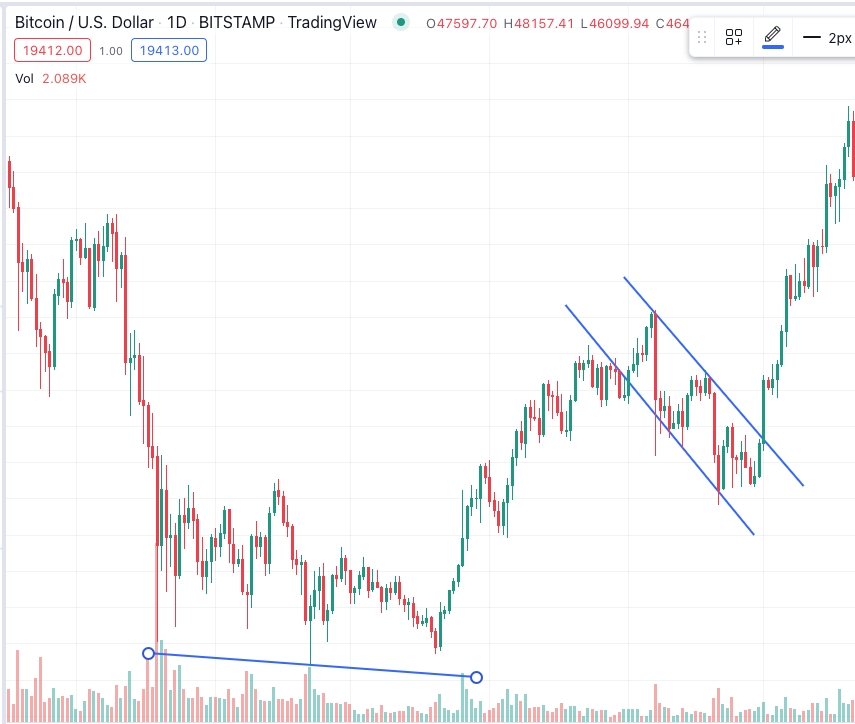
A cup and handle is a bullish reversal pattern that mirrors a cup, with the cup being similar to a rounding bottom chart pattern, and the handle is similar to a wedge pattern. The right side of the pattern denotes a low trading volume that may last for a 7 – 65 week timeframe.
Wedges
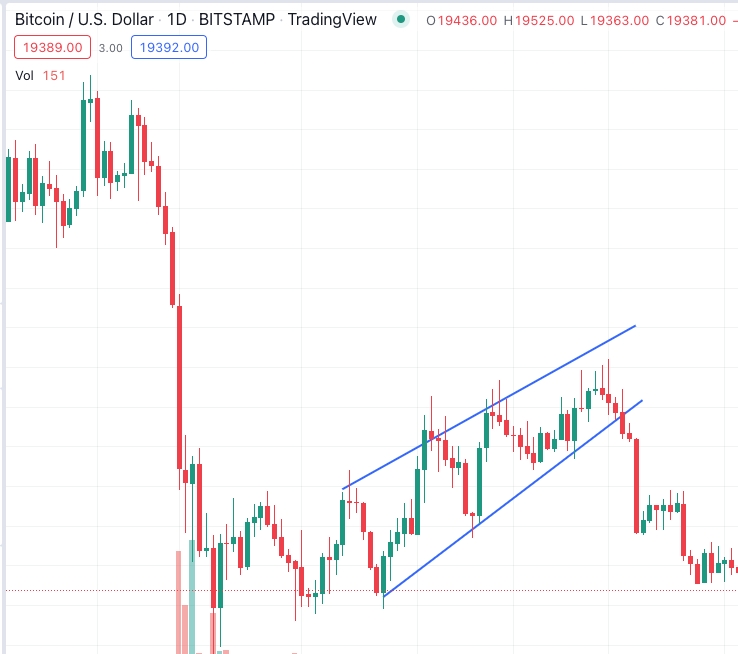
Wedges are bullish and bearish reversal patterns that occur when trend lines converge. A rising wedge is a bearish signal, while a falling wedge is a bullish signal.
